パウダースキーに関しては、短いスキーがゲームチェンジャーです。かつての扱いにくい長いスキーは忘れましょう。Snowfeet*のSkiblades 99 POWDERやWALKSKIバックカントリーツーリングスキーのようなコンパクトな選択肢は、機敏さ、携帯性、パフォーマンスを提供し、パウダースキーをより簡単で楽しいものにします。これらの軽量デザインは木々の間を縫うのに最適で、深雪に挑み、さらにはバックパックにも収まります。さらに、$399からの手頃な価格です。
簡単な概要はこちら:
- Snowfeet* Skiblades 99 POWDER:パウダーで遊び心のある簡単な操作ができるコンパクトな99cmスキー。価格:$399。
- Snowfeet* WALKSKI Backcountry Touring Skis:バックカントリー冒険のための軽量100 cmスキー。価格:490ドル。
- 伝統的なスキー(Nordica Enforcer 94やSalomon QST 106など):整備されたコースには最適ですが、重くて操作が難しく、価格も高め(600〜1,200ドル)。
結論?軽量で使いやすく、POWDERを夢のように扱い、しかも手頃な価格のスキーが欲しいなら、Snowfeet*が最適です。
ショートスキー vs. ロングスキー
1. Snowfeet* Skiblades 99 POWDER (99 cm)
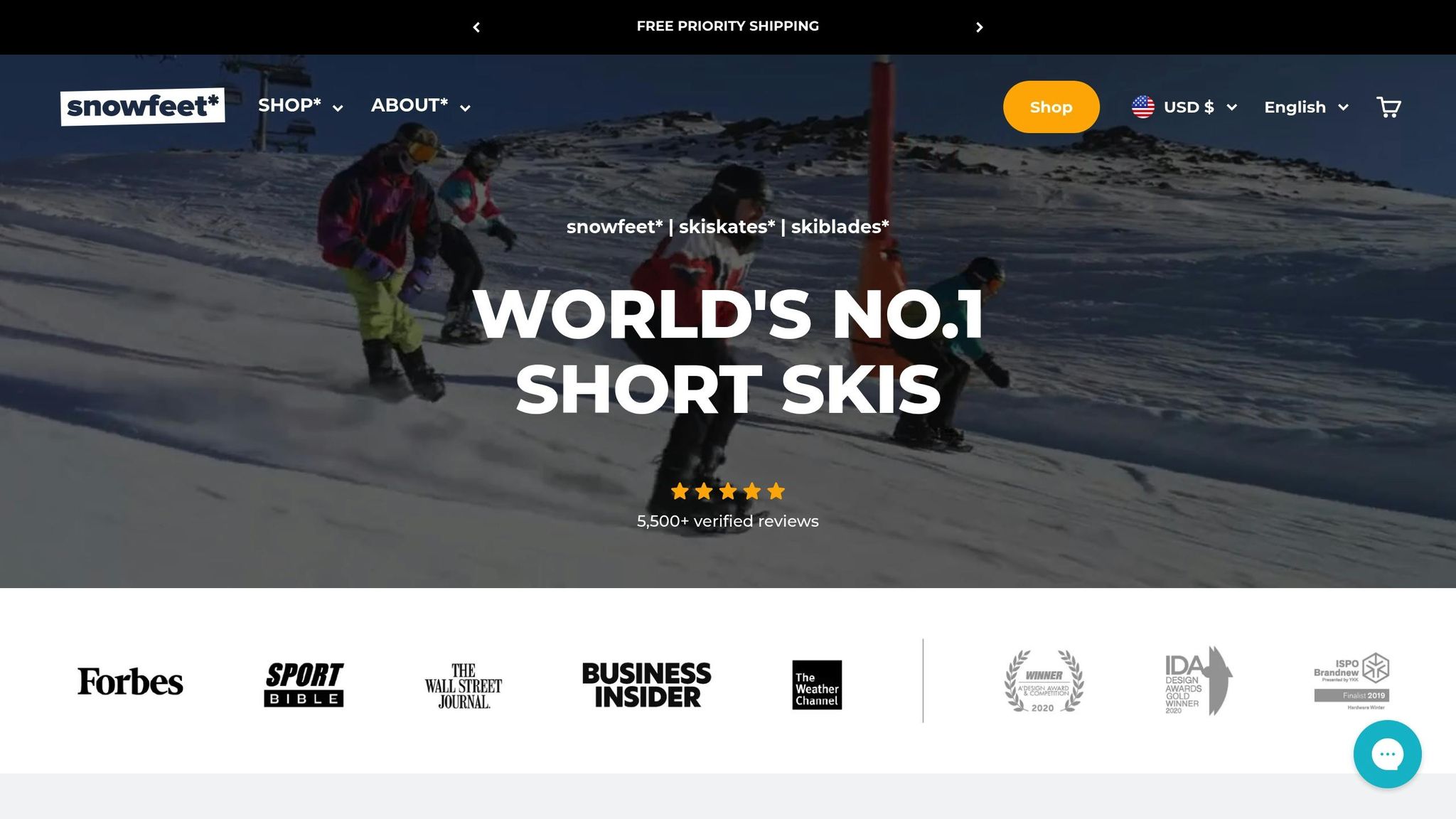
Snowfeet* Skiblades 99 POWDERは、深雪を楽しむのに巨大なスキーは必要ないことを証明する、POWDERスキーの新しいアプローチです。わずか39インチ(99 cm)の長さで、コンパクトで携帯性に優れ、プロのようにPOWDERを扱うために特別に作られており、Snowfeet*ならではの楽しさと機敏さを保っています。
深雪での浮力
広いチップとテールのデザイン、ロッカープロファイルのおかげで、これらのスキーブレードはPOWDERの上に浮かぶのがほとんど effortless(楽々)です。素早くプレーニングするよう設計されており、伝統的なスキーではなかなか味わえない浮遊感のあるサーフのような滑りを実現します。長いスキーは浮くためにスピードが必要なことが多いですが、これらの短いブレードは遅めで技術的なコースでも魔法のように機能します。Jackson Holeのパウダースロープをカービングしたり、Whistlerの新雪を楽しんだりするときも、これらのスキーブレードはあなたを高く乗せ続けます。
狭い場所での操作性
ツインチップデザインとコンパクトなサイズにより、これらのスキーブレードは素早く鋭いターンに最適です。特に木々の間や狭いトレイルのようなタイトな場所で便利です。軽量構造はスムーズなエッジからエッジへの移行を保証し、コロラドの密集したアスペングローブやバーモントのグレードを自信を持って滑走できます。
重量と携帯性
わずか約2.2ポンド(35オンス)の重さで、これらのスキーブレードは非常に軽量です。車のトランク、標準的な荷物、さらにはバックパックに取り付けても持ち運びが簡単です。特別な装備や追加の労力が必要な伝統的なスキーとは異なり、軽量パッキングを求める旅行者やバックカントリー冒険者にとって夢のような存在です。
価格
約399米ドルで、Skiblades 99 POWDERは、通常600〜900ドルの伝統的なスキーと比べてお得な価格です。
遊び心あふれるデザインと携帯性を兼ね備えたこれらのスキーブレードは、POWDER愛好者にとって素晴らしい選択肢です。次に、もう一つのSnowfeet*の革新、WALKSKIバックカントリーツーリングスキーを詳しく見ていきましょう。
2. Snowfeet* WALKSKIバックカントリーツーリングスキー(100 cm)
Snowfeet*は、パフォーマンスと携帯性に焦点を当てたギアでパウダースキーの世界を揺るがしています。Snowfeet* WALKSKIバックカントリーツーリングスキーは、未踏のパウダーを求めつつ、従来のバックカントリーセットアップのかさばりを置いていきたい冒険者のために作られています。これらのスキーは深雪でのパフォーマンスと軽量でコンパクトなデザインを組み合わせ、リモートな地形の探検に最適です。
深雪での浮力
幅広のプラットフォームとロッカープロファイルのおかげで、これらのスキーは中速でもしっかりとした浮力を提供します。通常170〜190 cmの長さで、浮くためにより高速が必要な従来のツーリングスキーとは異なり、WALKSKIの短い長さは深雪での扱いやすさを高めます。ユタのバックカントリーボウルをカービングしたり、コロラドで新鮮なパウダーを追いかけたりする際に、これらのスキーは雪の上を滑走し続けるよう設計されています。そのジオメトリはコントロールが重要なテクニカルな滑降に理想的です。
狭い場所での操作性
バックカントリーの地形をナビゲートするには、狭い樹林帯、狭いクーロワール、急なジグザグ道を通ることが多いです。わずか100 cmの長さで、これらのスキーは素早く鋭いターンを可能にしながら、深雪でも安定性を提供します。長いスキーは狭い場所で扱いにくいことがありますが、WALKSKIのコンパクトなサイズは狭くて難しい区間で理想的です。木々の間を縫うように滑ったり、岩の突起を避けたりする際に、これらのスキーは必要な精度を与えます。
軽量設計
わずか2.4 lbs (38 oz)の重さで、WALKSKIスキーは通常6〜8ポンドの従来のツーリングスキーよりもかなり軽量です。この軽量化は長距離のアプローチや露出した地形で装備を運ぶ際に大きな変化をもたらします。軽いほど疲労が少なくなり、滑降を楽しむためのエネルギーが増えます。さらに、その軽さはリモートのパウダースポットへのハイキングや次の冒険のための旅行時に持ち運びやすくします。
旅行に優しい携帯性
WALKSKIスキーのコンパクトなサイズは、移動中のパウダーハンターに最適です。標準的な荷物に収まり、空港での超過手荷物料金を節約できます。最高のコンディションを求めて山脈間を移動する人にとって、この携帯性は大きなメリットです。面倒を避けて楽しみに集中しましょう。
価格
約$490 USDで、WALKSKIバックカントリーツーリングスキーは、スキー単体で700ドルから1,200ドルかかる従来のセットアップに対する予算に優しい代替品を提供します。旅行費用の節約とこれらのスキーの多用途性を加えると、パウダー愛好家にとってパフォーマンスと利便性の両方を求める賢い投資です。
WALKSKIスキーは、時には小さくて軽い方が優れていることを証明しています。次に、Nordica Enforcer 94のような従来の選択肢とどのように比較されるかを見てみましょう。
3. Nordica Enforcer 94
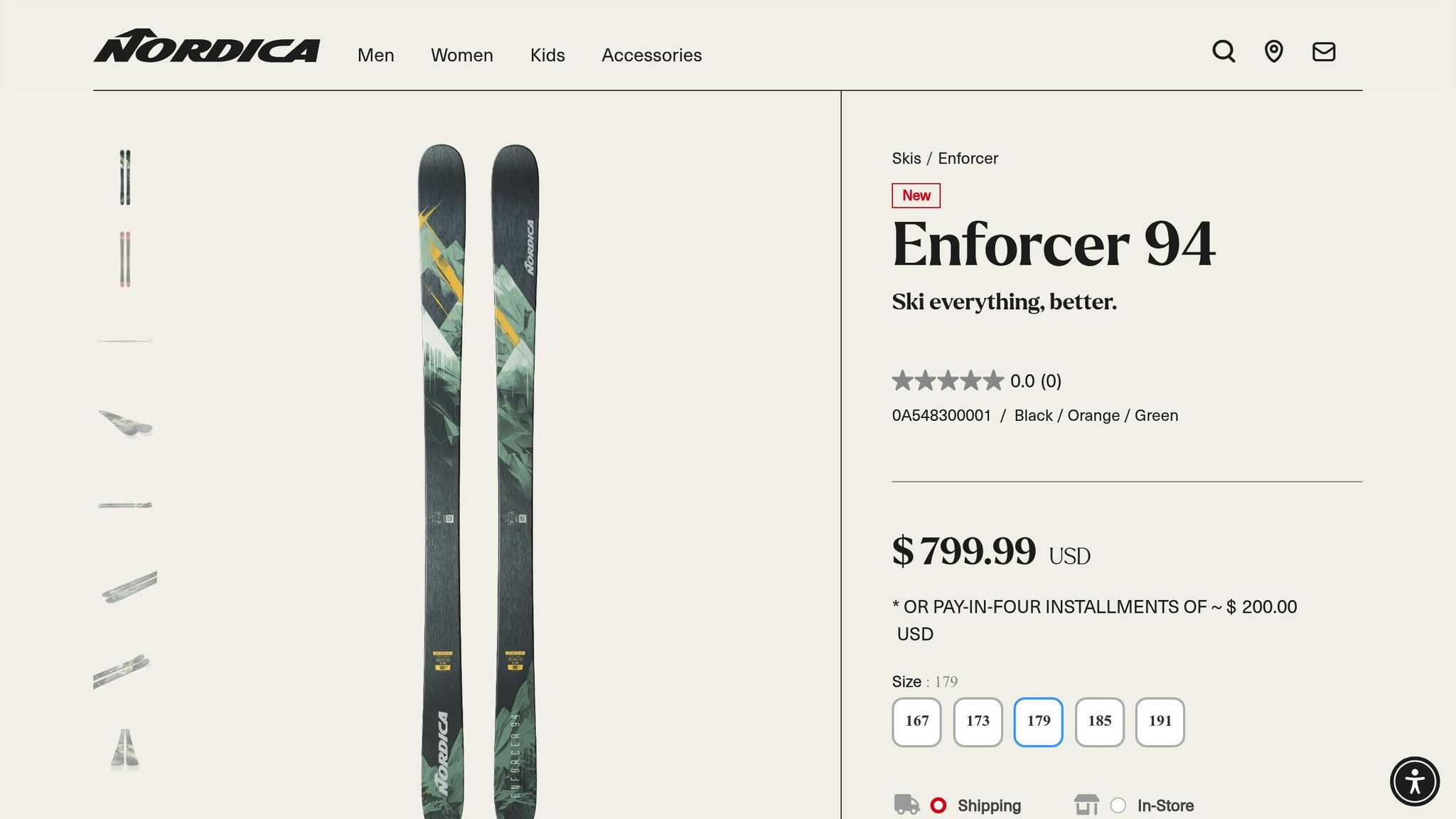
Nordica Enforcer 94は、特に整備されたコースで伝統的なデザインを好むスキーヤーに長く支持されてきました。圧雪された雪上では安定した性能を発揮しますが、Snowfeet*製品のような新しく多用途な選択肢と比べると深いPOWDERでは苦戦します。
深雪での浮力
POWDERに関しては、Enforcer 94には限界があります。高速で滑らないと浮力が十分ではありません。ここで、Snowfeet*のような明確なロッカープロファイルを持つ現代的なスキーが輝きます。柔らかく深い雪の中をほとんど努力せずに滑る感覚を実現します。
狭い場所での操作性
Enforcer 94でのタイトなターンは扱いにくいことがあります。長めのデザインは広いスイープターン向きで、狭い場所では機敏さに欠けます。対照的に、Snowfeet*のようなコンパクトなツインチップデザインは、はるかに速く正確な方向転換を可能にします。
重量と携帯性
Enforcer 94は重めで、疲れやすく持ち運びも大変です。携帯性や収納のしやすさを重視するなら、Snowfeet*のような軽量オプションを検討する価値があります。斜面外での扱いやすさが格段に違います。
投資に関する考慮事項
オールマウンテンスキーの中では中〜高価格帯に位置するEnforcer 94は、かなりの価格がついています。追加のセットアップ費用も加わるため、予算に優しい選択肢とは言えません。整備されたトレイルと深いPOWDERの両方で使える多用途で即戦力のソリューションを求めるスキーヤーにとって、Enforcer 94の伝統的なデザインはコストパフォーマンスが低く感じられるかもしれません。だからこそ、Snowfeet*のような現代的な代替品が注目を集めているのです。彼らはスキーのパフォーマンスと利便性の可能性を再定義しています。
4. Salomon QST 106
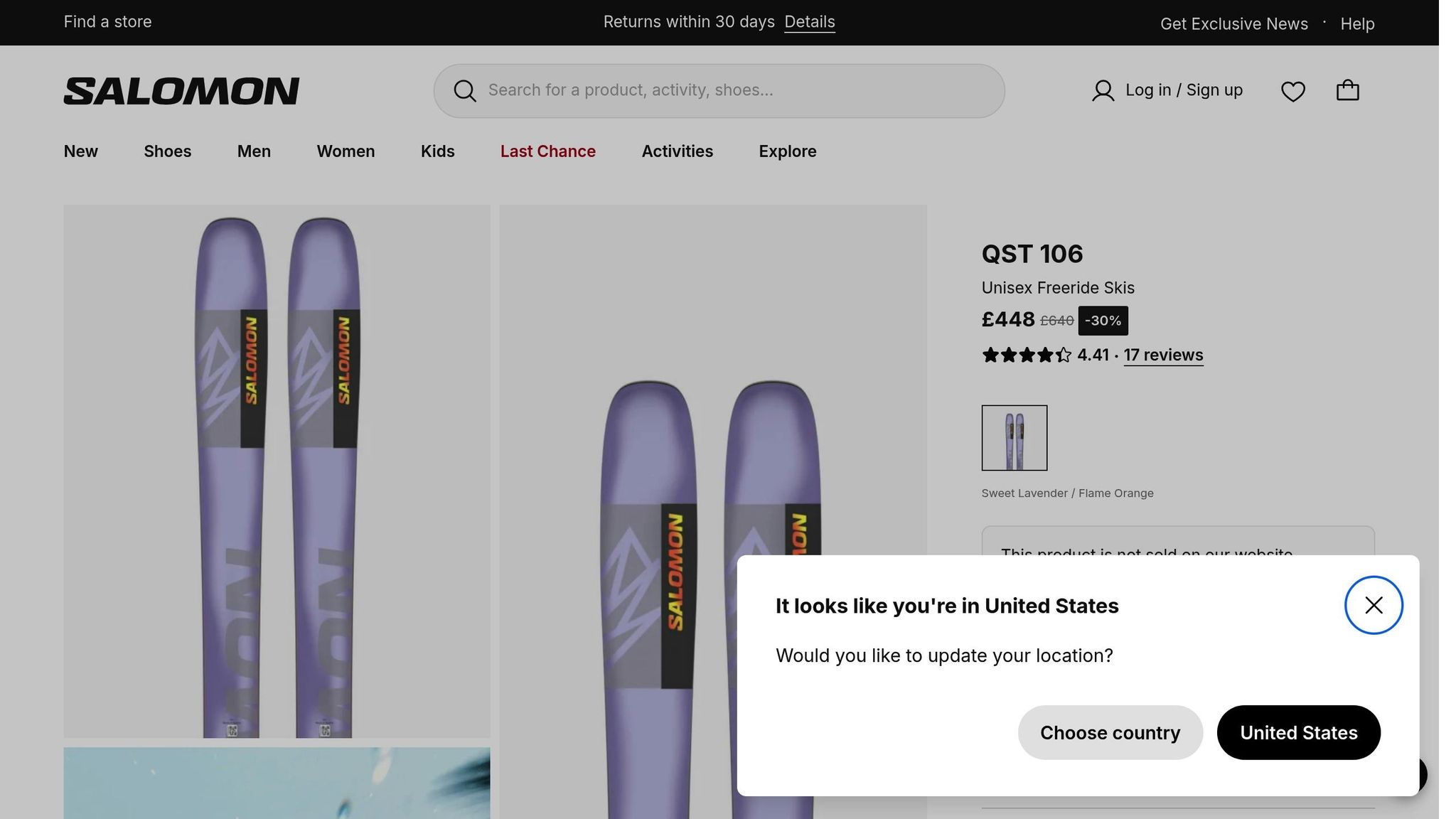
Salomon QST 106はクラシックなPOWDERスキーで、幅広く深雪向けに作られています。強みはありますが、Snowfeet*ギアの利便性と機敏さには及びません。
深雪での浮力
QST 106の幅広いプロファイルは深いPOWDERでの浮力をしっかりと提供します。しかし、その伝統的なロッカーデザインは、Snowfeet*製品が簡単に実現する滑らかな滑走にはより多くの努力を要します。セミロッカーチップはターンの開始を助けますが、全体的には機敏さに欠ける印象です。
狭い場所での操作性
狭い場所での素早いターンでは、QST 106の長さが不利になることがあります。一方、Snowfeet*はコンパクトなツインチップデザインで機敏さに優れ、難しい地形でも鋭いピボットと正確なコントロールを可能にします。
重量
ほとんどのPOWDERスキーと同様に、QST 106は重めで、疲れやすくなります。Snowfeet*製品ははるかに軽量で、疲労を軽減し、全体の体験をより楽しいものにします。
携帯性
QST 106のような伝統的なスキーを運ぶのは面倒です。長さがあるため、専用のトラベルバッグや十分な収納スペースが必要になることが多いです。Snowfeet*のギアはコンパクトなデザインで、通常の荷物や小さな収納スペースにも簡単に収まり、思い立ったらすぐに出かけられるのが魅力です。
価格
QST 106のような伝統的なPOWDERスキーセットアップはスキーだけでなく、アクセサリーやメンテナンスに高額な費用がかかることが多いです。初心者やカジュアルスキーヤーにとっては大きな障壁となります。Snowfeet*はより手頃で、すぐに使えるオプションを提供し、コストとセットアップの両方を簡素化し、伝統的な方法に対する実用的な代替手段となっています。
sbb-itb-17ade95
5. Blizzard Rustler 11
Blizzard Rustler 11は伝統的なスキー設計の強みを示していますが、同時にSnowfeet*のような革新を促したいくつかの課題も浮き彫りにしています。大きな山岳地帯での性能は優れていますが、その設計はより携帯性が高く使いやすい代替品と比べていくつかの制限を示しています。
深雪での浮力
Rustler 11はPOWDERでよく浮くように作られており、新雪の上を高く滑ることができます。しかし、これを実現するにはもう少し努力と技術が必要です。Snowfeet*は最小限の努力で浮力を提供しますが、Rustler 11は深雪でのパフォーマンスを維持するためにスキーヤーにより多くのエネルギーを要求します。
狭い場所での操作性
Rustler 11は長さがあるため、オープンスロープでの安定性に優れていますが、狭い場所では扱いにくいです。木々の間や狭いPOWDERの隠れ場所を滑るのは大変に感じることがあります。一方、Snowfeet*はコンパクトなデザインで、特に狭い場所での素早いターンや正確な動きが簡単にできます。
重量
Rustler 11の頑丈な作りは重量増につながり、長時間の山での滑走中に疲労が早く訪れることがあります。Snowfeet*製品は軽量素材で作られており、ずっと疲れにくい体験を提供します。
携帯性
Rustler 11のような伝統的なスキーの輸送は面倒です。特大のバッグが必要で、計画も慎重に行う必要があり、旅行が複雑になります。しかし、Snowfeet*製品は携帯性を考慮して設計されており、標準的な荷物に簡単に収まり、突然の旅行や保管がずっと簡単です。
価格
Rustler 11は一見手頃な価格に見えるかもしれませんが、ビンディング、ブーツ、プロによる取り付けの追加費用がすぐにかさみます。対照的に、Snowfeet*は箱から出してすぐに使える完全なパッケージで、POWDER愛好者にとってより予算に優しい選択肢を提供します。
これらの要素は、Snowfeet*がPOWDERスキーの冒険においてより便利でアクセスしやすい選択肢として際立ち続ける理由を示しています。
6. Völkl M7 Mantra
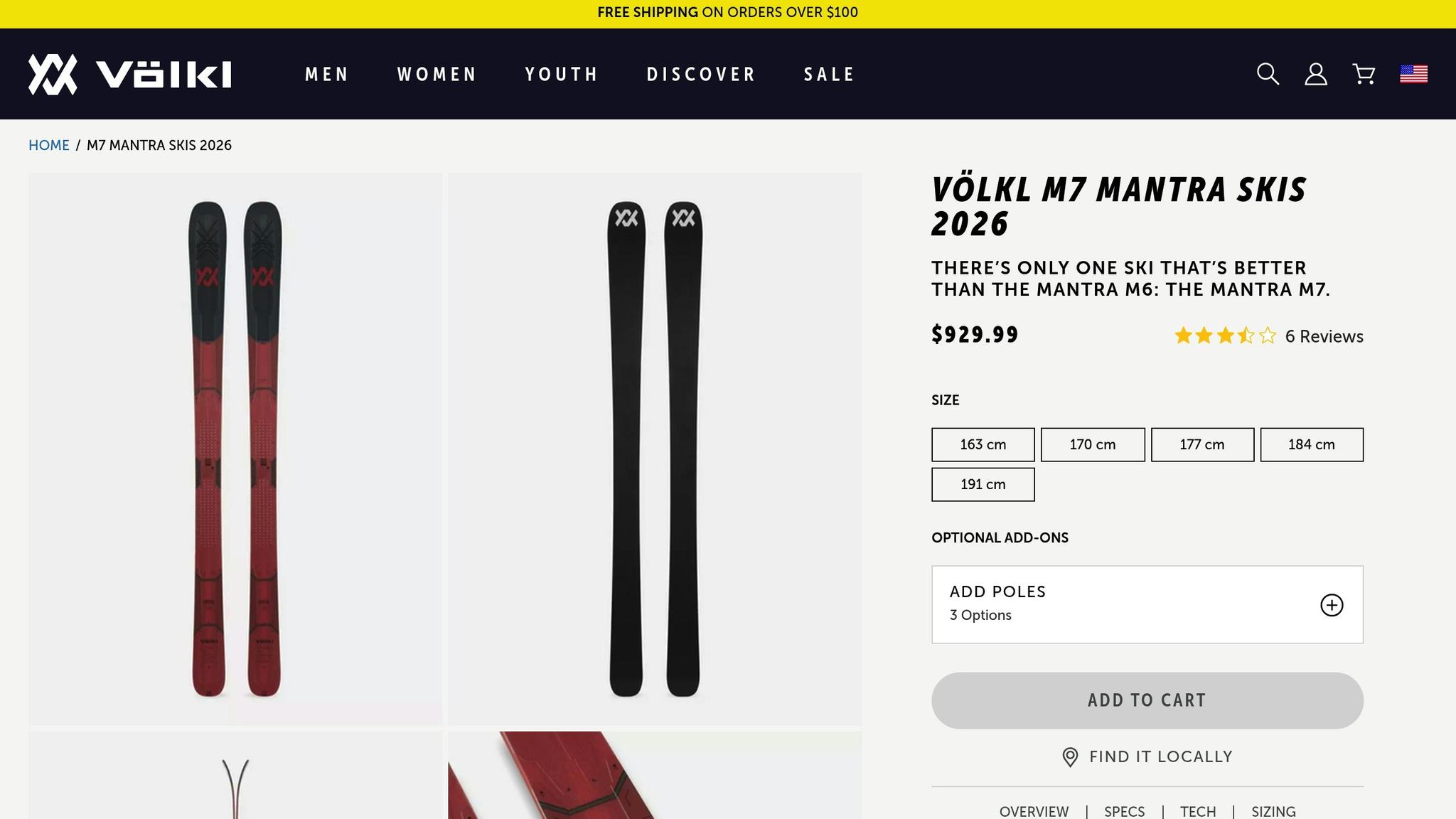
Völkl M7 Mantraは伝統的なスキー設計を好むスキーヤーに長く愛されてきました。しかし、Snowfeet*のような現代的な選択肢と比べると、その欠点がはっきりと見えてきます。熟練スキーヤーには堅実な選択肢ですが、M7 Mantraの設計は新しい代替品が提供する簡単さやシンプルさに比べると、よりハードな運動のように感じられることがあります。比較してみましょう。
深雪での浮力
確かに、M7 MantraはPOWDERに対応できますが、しっかりとした技術と多くの努力が必要です。一方で、Snowfeet*はより直感的で楽な乗り心地を提供し、POWDERの日をより気軽に楽しめるようにします。
狭い場所での操作性
M7 Mantra の長い長さは素早く鋭いターンには理想的ではありません。これに対し、Snowfeet* はコンパクトで機敏なデザインを誇り、狭い場所のナビゲートが簡単です。
重量
頑丈に作られた M7 Mantra は重さもあります。その余分な重さは特に長い日には疲労を早めます。Snowfeet* は軽さを保ち、疲労を減らし、より長く斜面に立ち続けられます。
携帯性(旅行と収納)
M7 Mantra での旅行は面倒です。大型バッグが必要で、慎重な取り扱いが必須です。Snowfeet*?コンパクトで収納も簡単、旅行がずっと楽になります。
価格
コストについて話しましょう。M7 Mantra セットアップ(ビンディング、ブーツ、取り付けを含む)は財布に大きな負担をかけることがあります。Snowfeet* ははるかに予算に優しいオールインワンパッケージを提供します。
これらの違いが、より多くのスキーヤーが Snowfeet* に傾いている理由を説明します。スキーをより簡単に、軽く、アクセスしやすくすることがすべてであり、雪の楽しさを犠牲にしません。
利点と欠点
なぜSnowfeet*が伝統的なスキーを常に凌駕するのかを分解してみましょう。Powder スキーに最適なギアを選ぶにはトレードオフがありますが、この比較は主な違いを明らかにします。
Snowfeet* は伝統的なスキーが重く感じる場面で際立ちます。コンパクトなデザインのおかげで、長いスキーに伴うかさばりや疲労を排除し、Powder スキーをより身近にします。
最大の利点の一つは?信じられないほど軽量です。伝統的なスキーは長い一日の後に重く感じることがありますが、Snowfeet* は軽さを保ち、疲労を軽減し、Powder の日を思い切り楽しめます。
Snowfeet* と一緒の旅はゲームチェンジャーです。伝統的なスキーはスキーバッグやルーフラック、その他高価な旅行用具が必要なことが多いですが、Snowfeet* は標準的なバックパックにすっきり収まります。これにより、思い立ったらすぐの旅行や手間のかからない移動に最適です。
2つの選択肢の簡単な比較はこちら:
| 特徴 | Snowfeet* 製品 | 伝統的なロングスキー | 勝者 |
|---|---|---|---|
| Powder Float | 最小限の努力で優れたパフォーマンス | 適切な技術で良好 | Snowfeet* |
| 機動性 | 優れた機動性 | 操作により多くのスペースが必要 | Snowfeet* |
| 重量 | 超軽量 | 明らかに重い | Snowfeet* |
| 携帯性 | バックパックに収まる | 専門的なギアが必要 | Snowfeet* |
| 学習曲線 | 初心者に優しい | POWDERスキーには急勾配 | Snowfeet* |
| 価格帯 | 手頃なオールインワンパッケージ | 別々のギアのための高いコスト | Snowfeet* |
この表は明確に示しています:Snowfeet*は、アクセスのしやすさ、使いやすさ、パフォーマンスを重視するスキーヤーにとっての定番の選択肢です。
従来のスキー、例えばSalomon QST 106やNordica Enforcer 94は、整地された斜面や変化のある地形で優れた安定性を提供しますが、欠点もあります。これらのセットアップは特に深いPOWDERでより多くの技術と努力を要求します。多くの中級スキーヤーにとって、正確な体重配分のような必要な技術を習得するには何年もかかることがあります。Snowfeet*は急な学習曲線を省き、最初から直感的にPOWDERスキーを楽しめます。ギアと戦うのではなく、楽しむことに集中できます。
もうひとつのボーナス?メンテナンスが簡単。Snowfeet*製品は定期的なワックスがけやエッジ調整が不要で、小さなスペースにも簡単に収納できます。一方、従来のスキーは頻繁なメンテナンスが必要で、より多くの場所を取ります。
多用途性に関しては、Snowfeet* がリードしています。伝統的なスキーは特定の条件で良いパフォーマンスを発揮することがありますが、一般的には様々な雪質や地形に対して適応性が低いです。Snowfeet* は新雪から圧雪まであらゆる状況に対応するよう設計されており、信頼できるオールラウンドな選択肢となっています。
最後にコストについて話しましょう。伝統的なセットアップは、スキー、ビンディング、ブーツ、プロの取り付けサービスを別々に購入することが多く、さらにチューンナップやフィッティングなどの継続的な費用もかかります。Snowfeet* はオールインワンパッケージでこれらを簡素化し、性能を犠牲にせずに節約したいスキーヤーにとって賢い選択肢です。
最終的なおすすめ
パウダースキーに関しては、Snowfeet* 製品は独自のリーグで際立っています。 effortless な浮力、驚異的な操作性、そして伝統的な長いスキーでは到底かなわないシンプルさを提供します。初心者でも経験豊富なバックカントリー探検家でも、あなたに合った Snowfeet* のオプションがあります。
初心者および中級スキーヤー向けには、Snowfeet Skiblades 99 POWDER*(399ドル)が素晴らしい選択肢です。99cmのこのスキーブレードは、伝統的なスキーよりも学びやすくなっています。複雑な技術やかさばるギアに苦労する代わりに、初日から自信を持ってパウダーを滑ることができます。
バックカントリー愛好家はSnowfeet WALKSKI バックカントリーツーリングスキー*(490ドル)を気に入るでしょう。これらの100cmスキーはゲームチェンジャーです - 専用のブーツやビンディングは不要。普段の冬用ブーツで使え、バックパックにすっきり収まるので、重いツーリングギアを持ち運ぶ手間が減ります。
上級スキーヤーの皆さん、もし機敏さと軽さが優先事項なら、Snowfeet* があなたをサポートします。伝統的なスキーは安定性を提供するかもしれませんが、Snowfeet* の遊び心があり疲労を軽減するデザインには敵いません。
そして山のコンディションについて話しましょう。ウィスラーやジャクソンホールのような場所での深いパウダーの日には、Snowfeet* 製品が優れています。長年の練習や完璧な技術を必要とせずに自然に浮かびます。伝統的なスキーはこのような容易さを得るために正確な体のポジショニングを要求するため、Snowfeet* はあらゆる経験レベルのパウダー愛好者にとって頼りになる選択肢です。
よくある質問
深いパウダーでの伝統的なスキーと比べて、Snowfeet Skiblades と WALKSKI バックカントリーツーリングスキーはどのようにパフォーマンスを発揮しますか?
Snowfeet Skiblades と WALKSKI バックカントリーツーリングスキーは、深いパウダースキーに特別な体験をもたらします。短くて軽量な設計のおかげで、驚くほどの機敏さを提供し、柔らかくふわふわの雪の中での素早く鋭いターンやコントロールがほとんど effortless に感じられます。パウダーコンディションで遊び心があり反応の良い滑りを求めているなら、これらのスキーは素晴らしい選択肢です。
従来の長いスキーは整備されたコースでのスピードと安定性を重視していますが、Snowfeet ギアは深雪での優れた浮力と素早い操作性で輝きます。さらに、そのコンパクトなサイズは持ち運びも非常に簡単で、バックカントリーの地形に挑戦するのも楽になります。パウダーの日を愛する人にとって、Snowfeet は山を楽しむ楽しく新しい方法を提供します。
なぜ Snowfeet 製品は従来のスキーと比べて旅行者にとってより良い選択肢なのでしょうか?
Snowfeet 製品は冬のスポーツを愛する旅行者にとって新鮮な風のような存在です。なぜなら、そのコンパクトなサイズ、軽量設計、携帯性が持ち運びに夢のようだからです。長くて扱いにくく、運搬が面倒な従来のスキーとは違い、Snowfeet ギアはバックパックやスーツケースに収まるほど短いのです。超過手荷物や追加の航空料金を心配する必要はありません。パッキングしてすぐに出発できます。
短いデザインは便利なだけでなく、操作が非常に簡単になる理由でもあります。狭いトレイルを縫うように滑る時も、新雪の中を滑る時も、スムーズな操作性を実現します。頻繁に旅行したり、未踏の地に挑戦する人にとって、Snowfeet ギアは重くてかさばる装備を持ち運ぶことなくスキーを楽しむ自由を提供します。冬の冒険を楽しくストレスフリーにすることが目的です。
Snowfeet 製品はパウダーでスキーを学ぶ初心者に適しているのか、そしてなぜ従来のスキーよりも優れた選択肢なのか?
Snowfeet ギアは、パウダースキーに初めて挑戦する初心者に最適な選択肢です。短くて軽いデザインのおかげで、従来のスキーよりも扱いやすくなっています。これにより、基本を早く習得でき、最初から楽しめます。さらに、操作がとても簡単なので、スムーズなターンができ、深雪に挑む自信がつきます。
Snowfeet の特長はそのコンパクトなサイズです。素早いターンが簡単にでき、動きにしっかり反応するので、パウダーの中を自在に滑れます。さらに、軽量設計なので脚への負担が少なく、疲れずに学びながら思いっきり楽しめます。楽しくて初心者に優しいスロープの楽しみ方を探しているなら、Snowfeet が全体のプロセスをシンプルでずっと楽しいものにしてくれます。

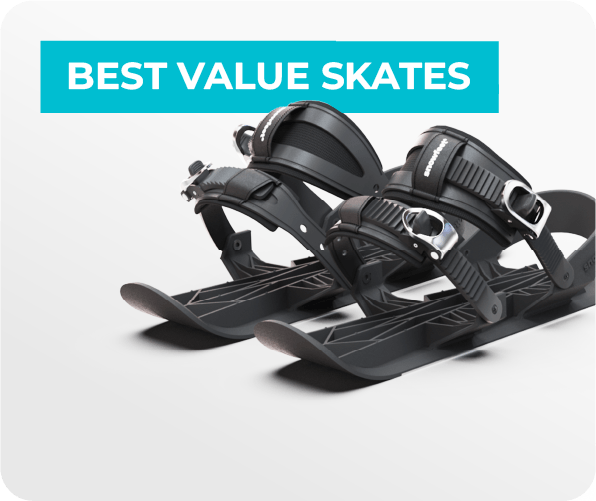



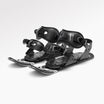
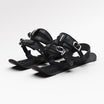
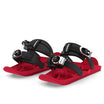
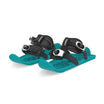

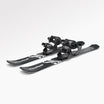

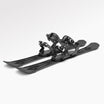
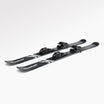






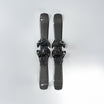
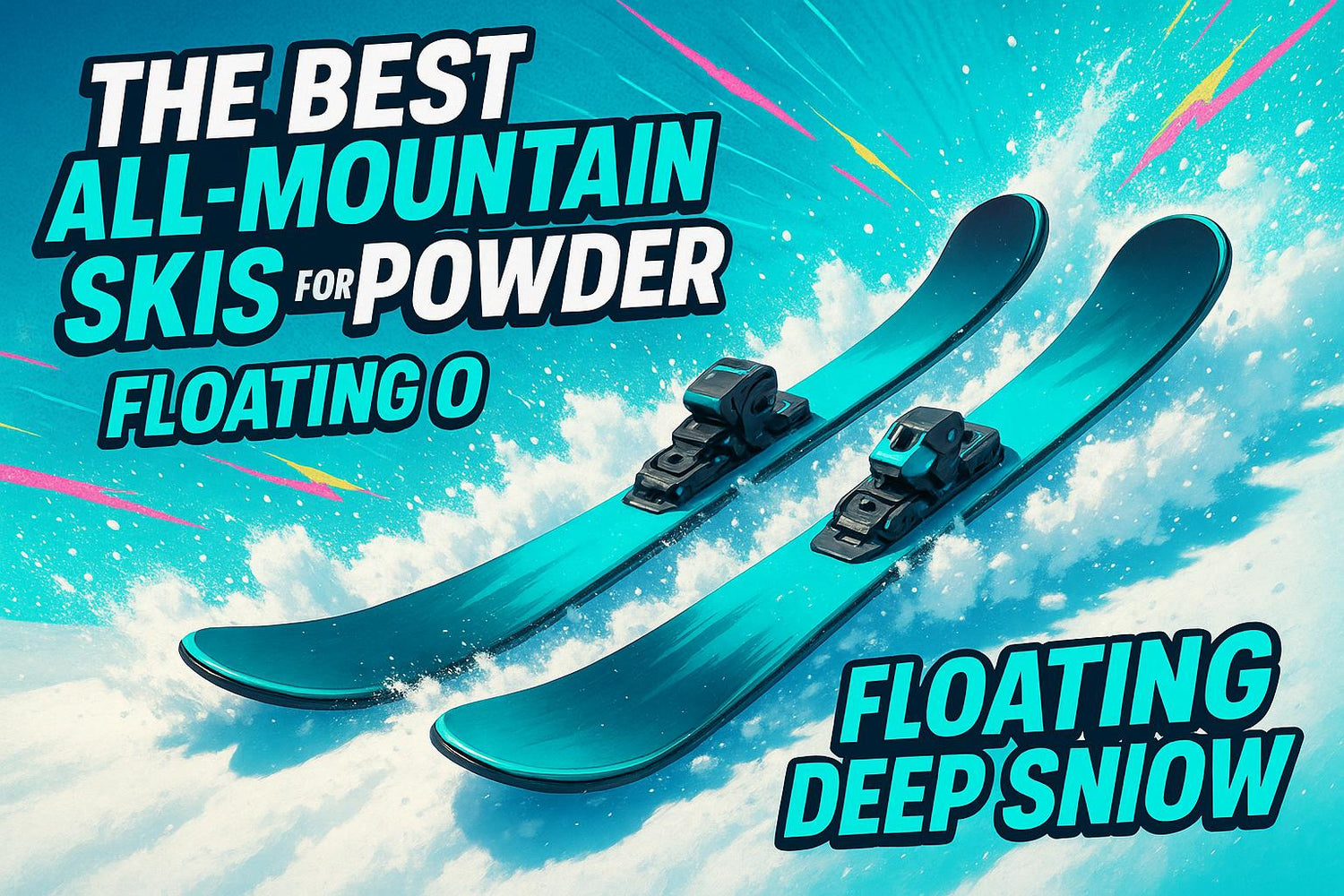
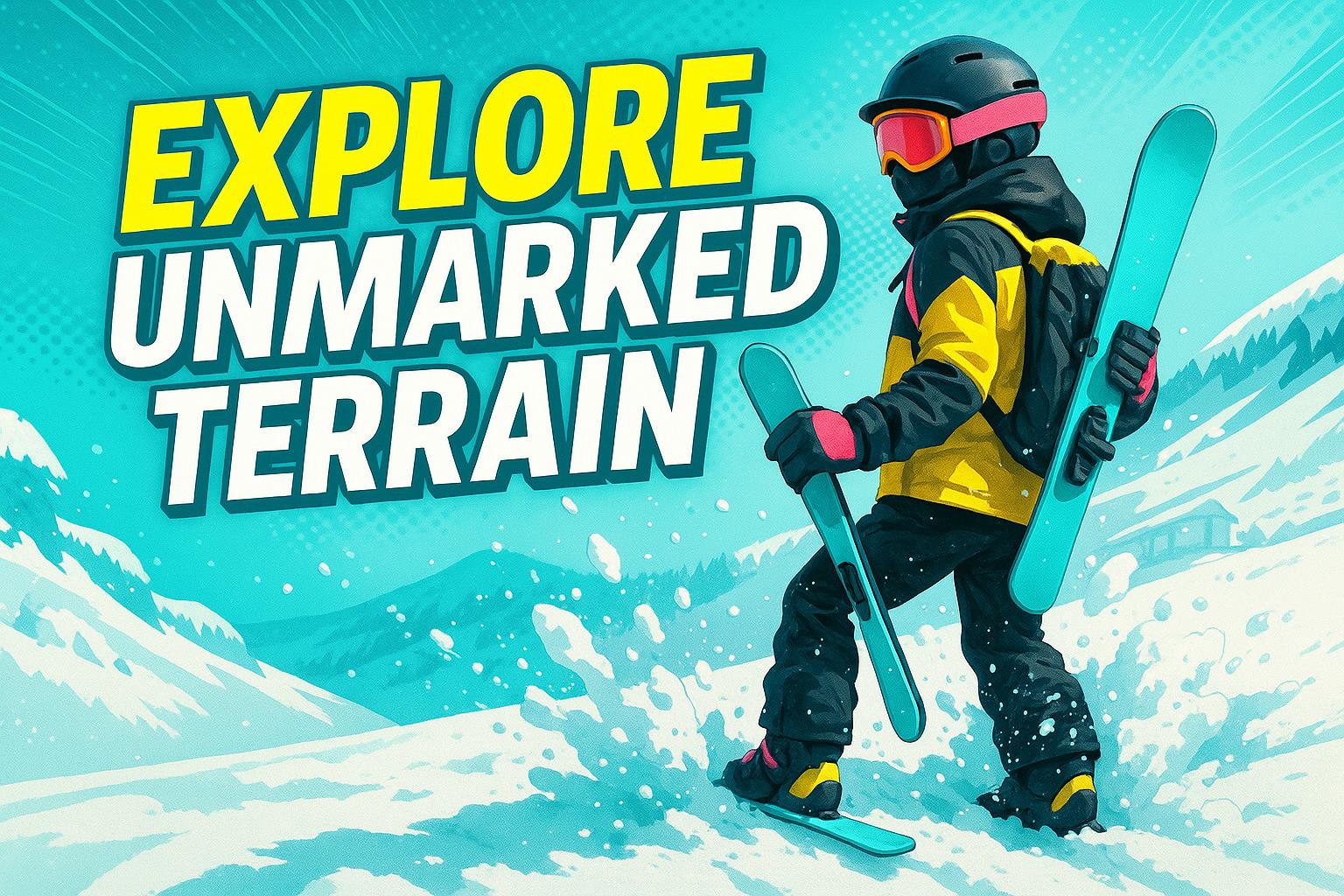
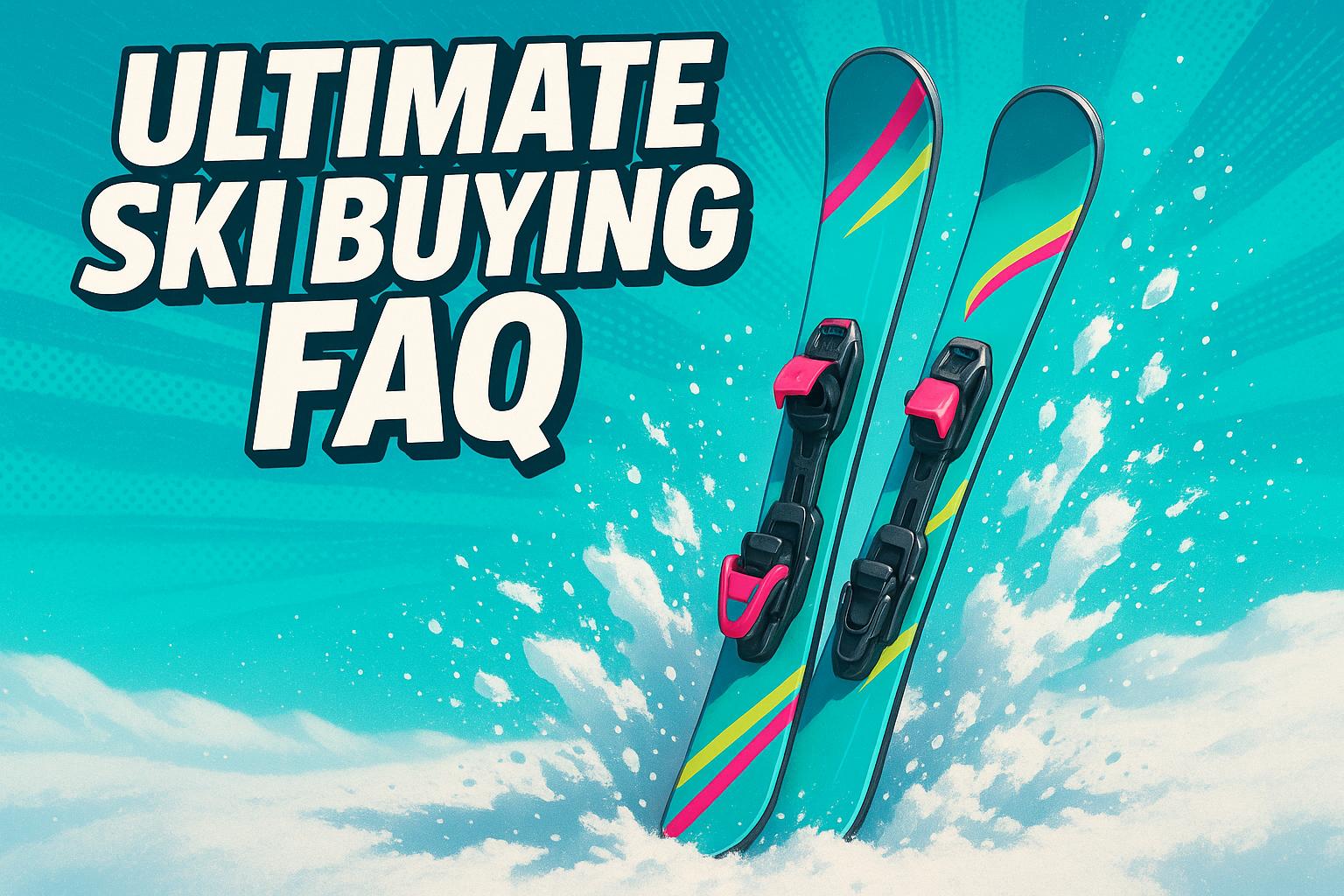
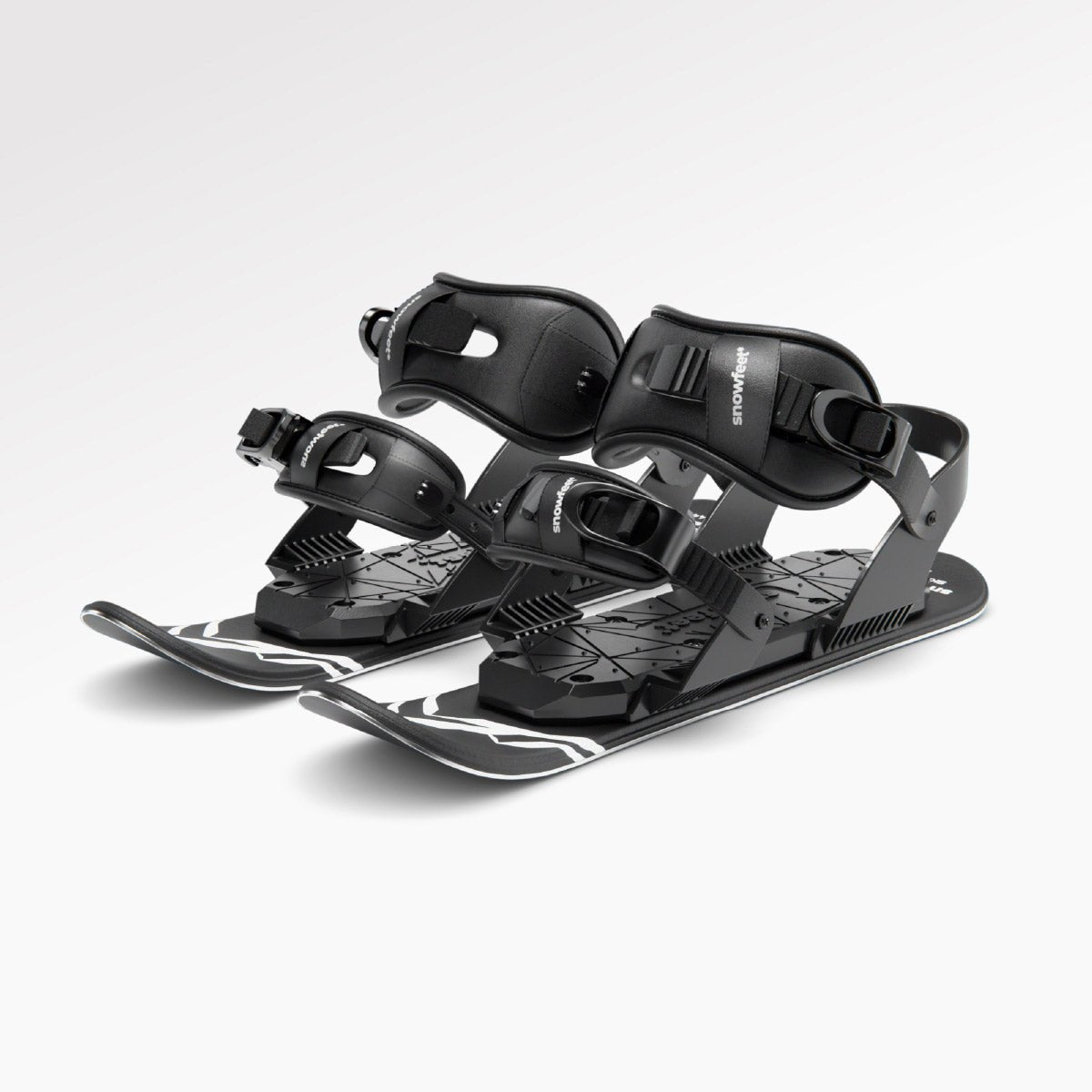
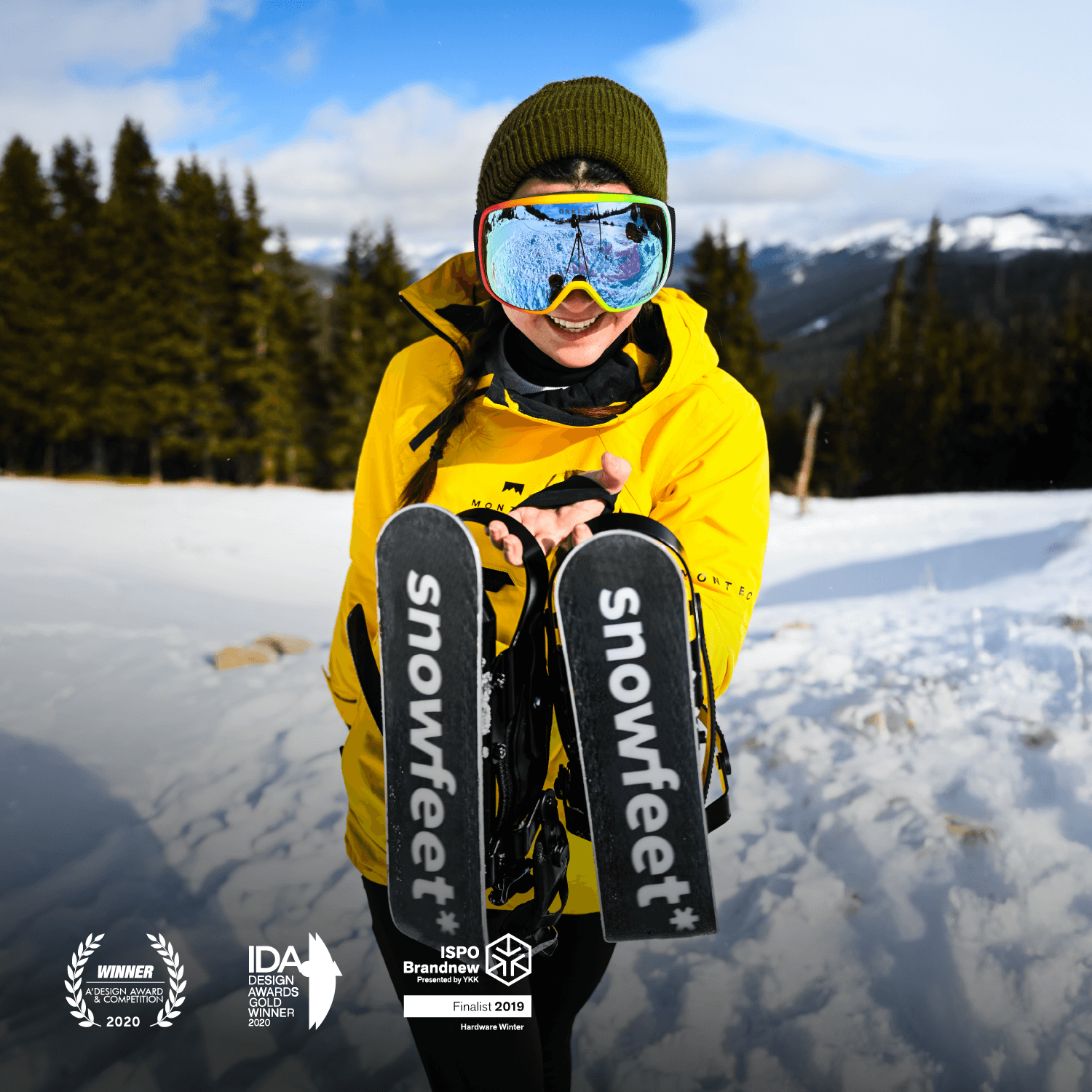
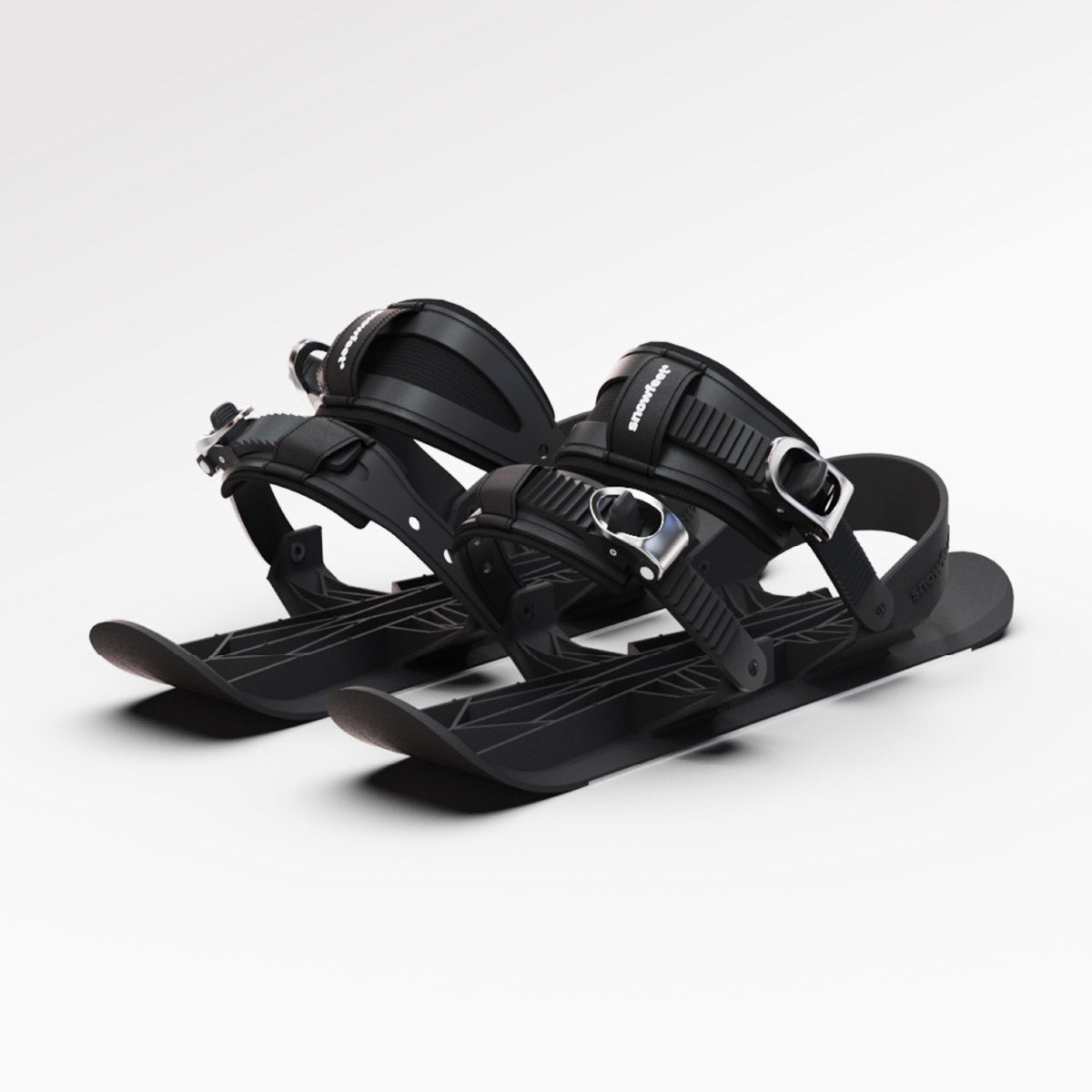

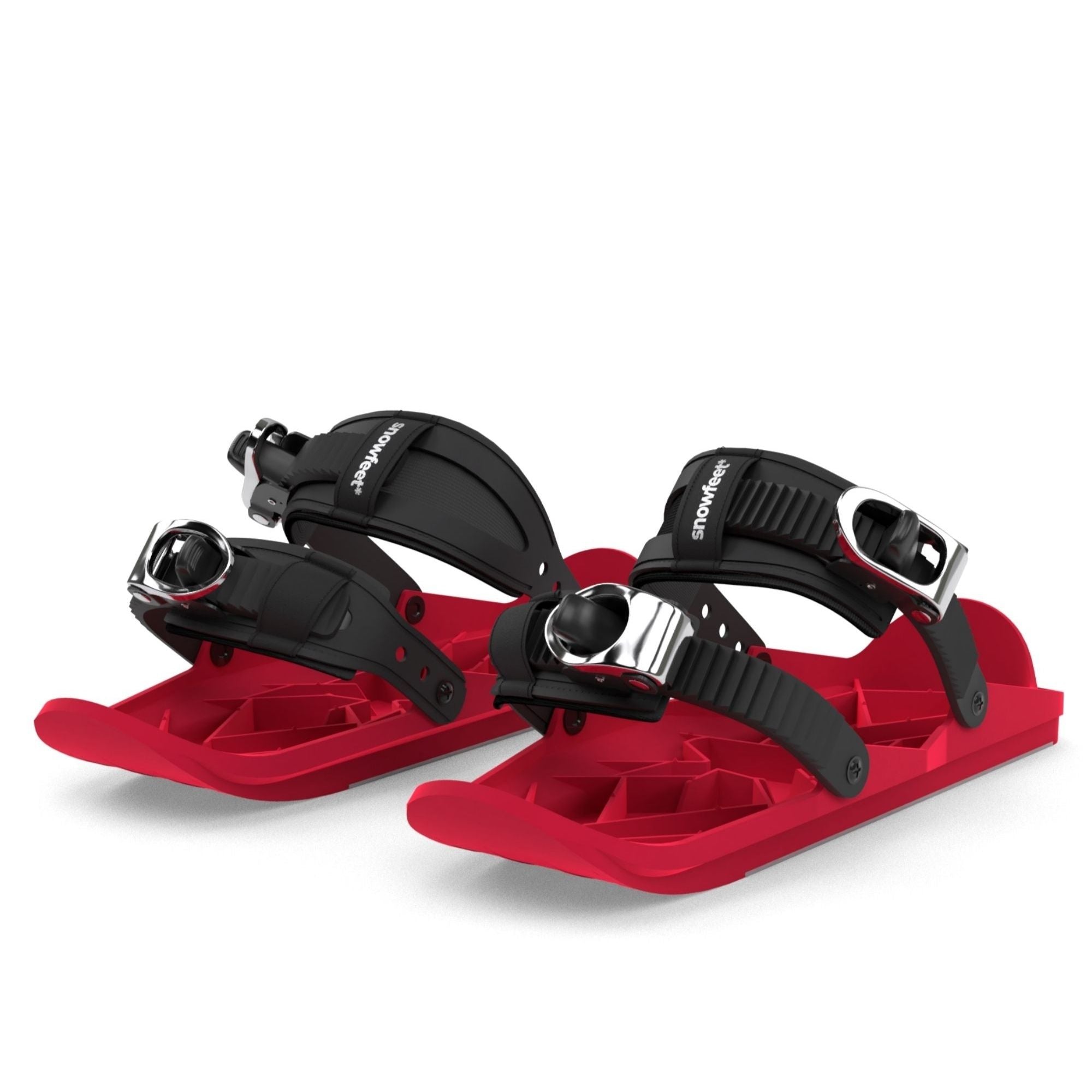
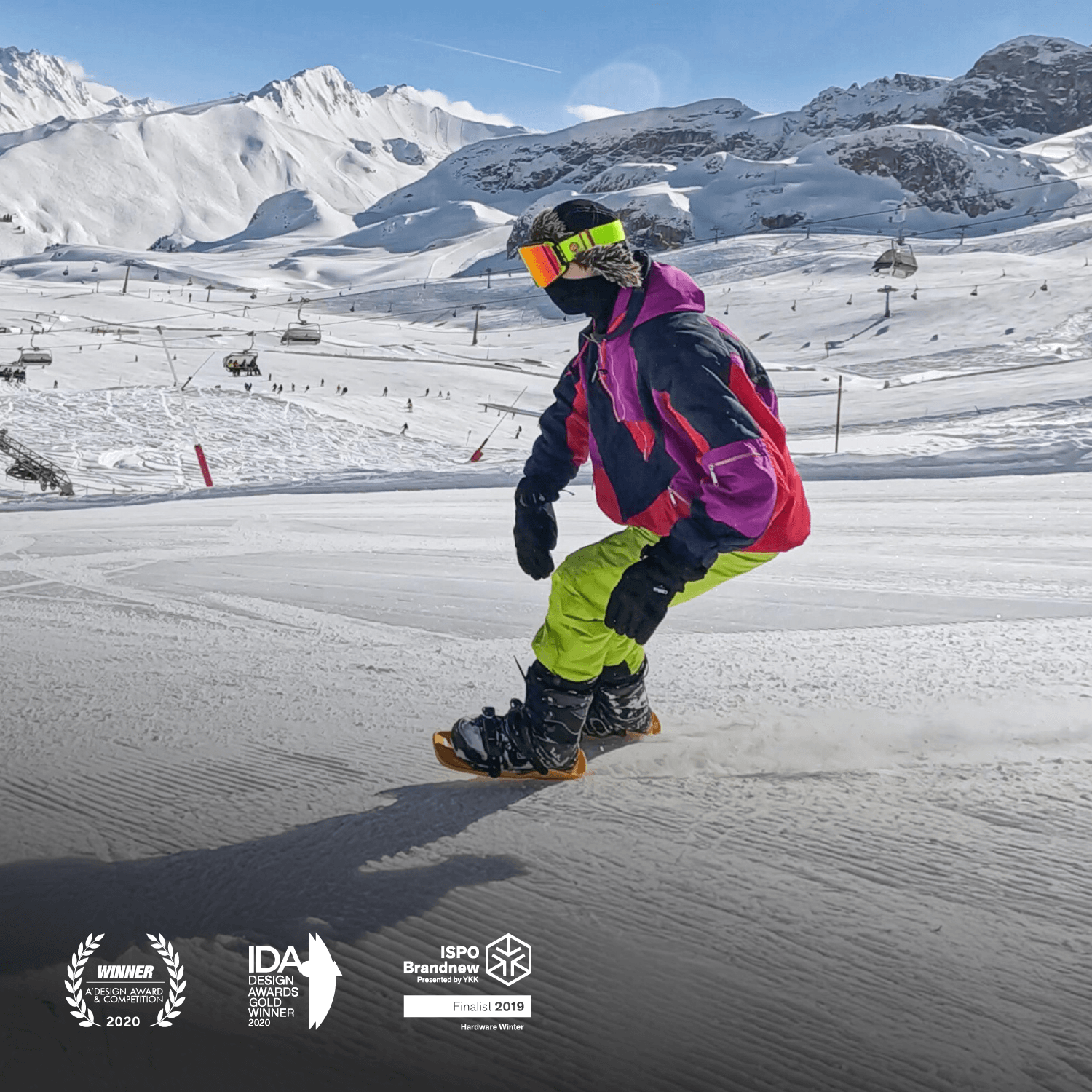


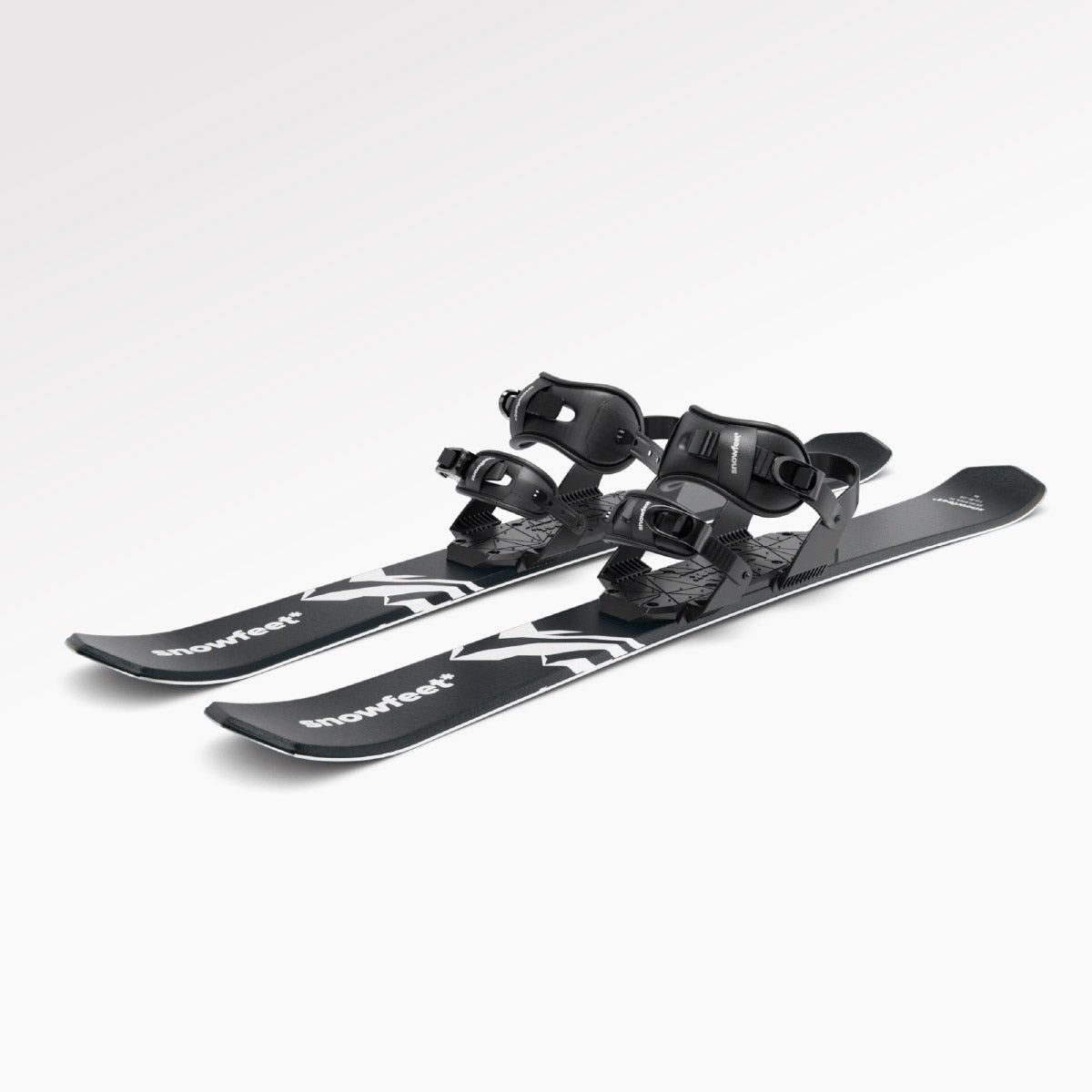
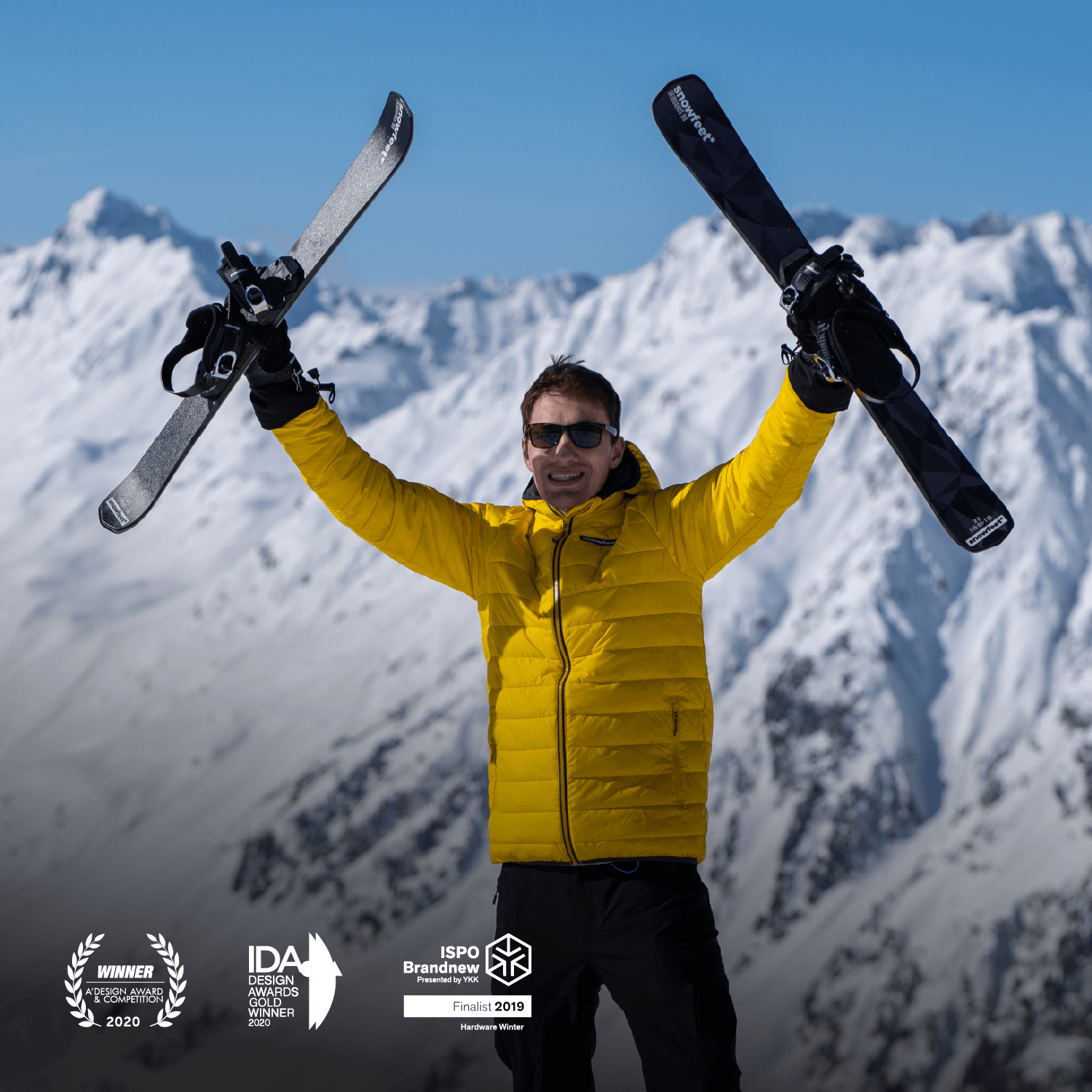
コメントを残す
このサイトはhCaptchaによって保護されており、hCaptchaプライバシーポリシーおよび利用規約が適用されます。